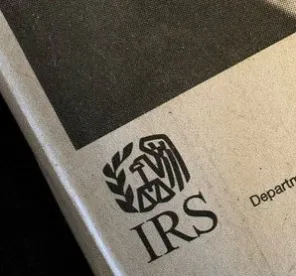As part of the Coronavirus Aid, Relief, and Economic Security Act (CARES Act) that was passed on March 27, 2020, important tax-related provisions were enacted into law relating to individuals, corporations, businesses, retirement plans, and nonprofits. In addition, the Internal Revenue Service (IRS) has issued relief measures regarding filing tax returns, payment of federal taxes, and IRS tax enforcement.
Income and Payroll Tax Changes for Businesses
Modifications for Net Operating Losses
The CARES Act allows corporations, individuals, and other businesses carried through partnerships, S corporations and other pass-through entities to carry back five years net operating loss (NOLs) incurred in 2018, 2019, or 2020 (or in taxable years beginning in those years). While the five-year carryback of NOLs incurred in 2018, 2019, or 2020 is automatic, the taxpayer may elect to waive the carryback, effectively electing to only carry forward such NOLs.
Additionally, the CARES Act suspends the 80% taxable income limitation on the use of NOLs for taxable years beginning before Jan. 1, 2021, thus, temporarily allowing taxpayers to offset their taxable income fully with NOLs incurred in 2018, 2019, or 2020 (or in taxable years beginning in those years).
As an exception, the CARES Act does not allow real estate investment trusts (REITs) to carry back any NOLs. Further, NOLs generated by a non-REIT company cannot be carried back to a year in which such company was a REIT.
Under a special rule, life insurance companies must treat NOL carrybacks to taxable years beginning before Jan. 1, 2018, as operating loss deductions subject to Section 810 of the Internal Revenue Code (the Code) before it was repealed.
In addition, NOL carrybacks cannot be used to offset the transition tax imposed by Section 965 of the Code pursuant to the Tax Cuts Jobs Act of 2017 (TCJA). If a taxpayer carries back NOLs to a taxable year in which the transition tax applies, the taxpayer would be deemed as having made the Section 965(n) election such that the taxpayer cannot use the NOLs to offset the transition tax. However, the taxpayer has the option to elect to exclude the carryback of the NOL to any year in which the Section 965 transition toll tax applies.
Generally, the changes to the NOL rules would allow taxpayers to amend prior year tax returns (Form 1040X for individual taxpayers and Form 1020X for corporate taxpayers) and obtain refunds by carrying back NOLs incurred in 2018, 2019, or 2020 (or in taxable years beginning in those years) and thereby access additional cash necessary to cope with the business losses generated due to the COVID-19 emergency. Further, the ability to carry back NOLs to pre-2018 taxable years would provide additional liquidity for corporate taxpayers, as the corporate tax rate in those years was 35% (instead of the current 21% under the TCJA).
Under certain circumstances, taxpayers may be able to receive such tax refunds sooner after filing a tax return for the year to which an NOL is carried back, by using the “quickie refund” procedure under Section 6411 of the Code by filing IRS Form 1045 (for individual taxpayers) or IRS Form 1139 (for corporate taxpayers). Upon filing Form 1045 or Form 1139, as applicable, the IRS is required (after verifying the application) to issue a refund by the later of the 90 days from (i) the date on which Form 1045 or Form 1139 is filed or (ii) the last of the month of the due date of filing the return for the NOL carryback year.
While the due date for filing a “quickie refund” application for the 2018 calendar year or an earlier year has passed, the IRS may issue additional guidance prescribing procedures under which taxpayers may be allowed to file Form 1139 or Form 1045 for such prior years. If a taxpayer has an NOL for the 2019 tax year, the taxpayer must file the return soon, as quickie refunds cannot be obtained before filing the return.
To avoid any unintended consequences, taxpayers must be careful and consider waiving the NOL carryback in special situations such as the following:
-
the existence of a short taxable year;
-
a carryback year in which a corporation was a member of a consolidated group;
-
a carryback year in which a corporation acquired (or was acquired by) another corporation (consider reviewing the tax-sharing agreements, sale-purchase agreements, and other applicable deal documents);
-
a carryback year in which a corporation was not classified as a corporation;
-
a carryback year in which the taxpayer claimed a Section 250 deduction for global-intangible low-taxed income (GILTI) (50% deduction) and/or foreign-derived intangible income (FDII) (37.5% deduction). Such deductions may be impacted due to the availability of additional NOLs in the carryback year;
-
a carryback year in which the taxpayer claimed a domestic production activities deduction under Section 199 (effective for taxable years beginning before Jan. 1, 2018), charitable contribution deduction under Section 170(b)(2)(A), the general business credits, and foreign tax credits. Such deductions or credits may be impacted due to the availability of additional NOLs in the carryback year.
Modification of Limitation on Business Losses for Individuals and Other Non-Corporate Taxpayers or Entities
The CARES Act retroactively suspends the application of the “excess business loss” limitation rule that was added to Section 461(l) of the Code by the TCJA and that prevents non-corporate taxpayers from deducting net losses during the taxable year that are attributable to trades or businesses of the taxpayer in excess of $250,000 (or $500,000 in the case of a joint return). The CARES Act removes this limitation for 2018, 2019, and 2020 (or in taxable years beginning in those years).
This means that a taxpayer whose excess business losses have been disallowed for the taxable year 2018 (or 2019 if the taxpayer already filed a tax return for that year) may file an amended tax return and claim a refund for such disallowed deduction to access critical cash flow to maintain the trade or business operations.
The CARES Act clarifies that any disallowed excess business loss is treated as an NOL carryover to subsequent taxable years.
The CARES Act also clarifies that excess business losses are deducted without regard to (i) any deductions allowable under Section 172 for NOLs, (ii) Section 199A qualified business income deductions, (iii) any deductions, gross income, or gains attributable to any trade or business of performing services as an employee, and (iv) deductions for capital losses.
Modification of Limitation on Business Interest
For 2019 and 2020 (or taxable years beginning in those years), the CARES Act increases the limitation added to Section 163(j) of the Code by the TCJA on the deduction of net business interest expense from 30% of the taxpayer’s adjusted taxable income (ATI) to 50% of the taxpayer’s ATI for the year.
-
For partnerships, the new 50% increased limitation generally applies only beginning in 2020, although 50% of the disallowed business interest expense in 2019 allocated to partners will be eligible for deduction at the partner level in 2020 without any limitation (see below).
The increase in the Section 163(j) business interest deduction limitation would allow taxpayers to reduce their taxes for taxable years 2019 and 2020 (or taxable years beginning in those years). This, in turn, would help increase business liquidity and employee retention.
ATI remains similar to EBITDA for tax years beginning after Dec. 31, 2017, and before Jan. 1, 2022, and similar to EBIT for tax years beginning Jan. 1, 2022 (i.e., no add-back for depreciation, amortization, and depletion will be allowed for tax years beginning Jan. 1, 2020). Certain special rules apply to floor-plan financing interest for the taxable year.
Amounts disallowed as business interest deduction under this limitation may still be carried forward indefinitely.
In addition, under the CARES Act, if a taxpayer has a lower ATI in 2020 (e.g., due to the impact of COVID-19 on the taxpayer’s business), the taxpayer may elect to use its 2019 ATI (if it is higher) to compute its business interest expense limitation in 2020. For example, a taxpayer that has $200 of ATI in 2019 and $50 of ATI in 2020 may elect have a $100 limitation (50% of $200 ATI) for its 2020 tax year (instead of a $25 limitation).
Taxpayers, other than partnerships, may elect out of the new 50% limitation for 2019, 2020, or both (or for taxable years beginning in those years). A partnership may elect out of the new 50% limitation only for 2020 (or for a taxable year beginning in 2020) because the increased limitation for partnerships generally applies only beginning in 2020.
There are special rules under the CARES Act for partnerships. Generally, for 2019, partnerships would still be subject to the current 30% ATI limitation. However, 50% of the disallowed business interest expense of the partnership for 2019 that is allocated to a partner in 2019 would be deductible in 2020 by the partner without regard to any limitation under Section 163(j). The remaining 50% of the disallowed business interest expense of the partnership for 2019 allocated to the partner will be subject to the existing limitation, i.e., it will be deductible only to the extent the partner receives an allocation of the partnership’s ATI in excess of the ATI needed to support the partnership’s interest deduction.
Technical Amendment on Qualified Improvement Property
The CARES Act fixes a technical drafting error contained in the TCJA provisions that were intended to benefit, by way of a 100% first-year write off, retailers and restaurant operators who made leasehold improvements and to benefit landlords who made interior improvements to non-residential property (collectively, Qualified Improvement Property).
The TCJA provided a 100% first-year write off for many types of capital expenditures. Congressional tax writers intended this benefit to be available for the cost of improvements to Qualified Improvement Property. In the rush to get the 2017 TCJA tax bill pushed through, there was a legislative drafting error that caused such improvements to be left out of the definition of expenditures eligible for the 100% write off. Indeed, such improvements were given a longer write off period (39 years) than under the prior law (15 years). The Department of the Treasury acknowledged the error, but took the position that this drafting error could only be fixed by Congress.
The CARES Act corrects the 2017 drafting error retroactively to Jan. 1, 2018, so that the cost to make improvements to Qualified Improvement Property may be expensed as if the error had not occurred.
In order to take this write-off, the improvements must have been placed in service at least three years after the building itself was placed in service. Consequently, retailers, restaurant operators, and landlords are now able to fully write off the cost of making improvements to Qualified Improvement Property that were placed in service in 2018 and 2019 and the building itself was placed in service at least three years earlier.
Taxpayers may file amended returns to reflect the 100% write-off for such improvements placed in service in 2018 in order to receive a refund. Taxpayers may deduct such costs for improvements placed in service in 2019 on their 2019 returns when filed to reduce their tax obligation.
Modification of AMT Credits for Corporations
Section 2305 of the CARES Act accelerates the ability of U.S. corporations to claim 2018 or 2019 refunds by fully offsetting their regular U.S. corporate income tax liability in those years with Alternative Minimum Tax (AMT) credits. As a reminder, the TCJA repealed the corporate AMT and allowed U.S. corporations to fully offset their regular U.S. corporate income tax liability with AMT credits. Any remaining AMT credit amount became refundable incrementally from 2018 through 2021.
Corporate taxpayers wishing to accelerate an AMT credit refund for 2018 may use a quick refund procedure (e.g., Form 1139) to claim these credits once further guidance is provided.
Corporate taxpayers with a short tax year in 2019 may experience a refund reduction and may consider electing the 2018 refund approach.
Employee Retention Tax Credits for Employers Subject to Closure Due To COVID-19
The CARES Act allows a 50% tax credit for wages paid to employees of businesses that have been closed due to governmental order or that have encountered a significant decline in gross receipts. The tax credit is capped at $5,000 for each employee, so there would be no credit allowed after the first $10,000 in wages eligible for the credit have been paid. The eligibility rules vary depending on the number of workers. The credit is allowed for wages paid after March 12, 2020, and before Jan. 1, 2021, if the requirements are satisfied.
The first requirement is that (i) the employer’s business has either been fully or partially closed due to a COVID-19-related governmental order, or (ii) the business’s gross receipts for the calendar quarter are less than 50% of the gross receipts for the same quarter in the prior year, and continuing for subsequent calendar quarters until the gross receipts climb to more than 80% of the respective prior year calendar quarter.
The second requirement is that the employer does not receive a small business interruption loan under the CARES Act’s Paycheck Protection Program (which itself is limited to companies with less than 500 employees). If an employer takes this credit, and later obtains a small business interruption loan, the tax credit is recaptured and must be repaid to the IRS.
The third requirement applies only to companies with more than 100 employees. For such an employer to receive the tax credit for wages paid to any specific employee, such employee may not be providing any services to the employer. This means that if an employee is working from home because the business is closed due to a COVID-19-related governmental order, the wages paid would not be eligible for the credit. There is an aggregation rule that treats a group of affiliated employers as a single employer for determining whether an employer has more than 100 employees.
The 50% tax credit is allowed for wages plus amounts paid or incurred to maintain the employee’s group health plan on pro rata basis during the time the employee is receiving retention benefits. For example, assume an employee is paid $1,000 per week, and receives group health insurance benefits that are continued by the employer, and the cost to provide the health insurance is $100 per week. In such a case, the amount eligible for the 50% credit would be $1,100 (for a $550 tax credit). However, the maximum credit per employee would still be limited to $5,000.
In order to avoid a double tax benefit, the deduction for wages paid will be reduced by the amount of the tax credits received. Furthermore, the credit will not be available for wages paid to owners of a business or their relatives.
If an employer uses a Professional Employer Organization (PEO) to provide staffing, the credit belongs to the employer, not to the PEO. The PEO is required to provide information to the employer to allow the employer to claim the credit.
The credit is taken against the social security component of payroll taxes. If the amount of the credit exceeds the social security component of payroll taxes, the excess amount will be refunded. The IRS announced in Release IR-2020-62 that an employer can be immediately reimbursed for the credit by reducing their required deposits of payroll taxes that have been withheld from employee wages by the amount of the credit. In other words, an employer can retain the amount of taxes withheld from its employees in order to be reimbursed for the credit. If the employer’s tax deposits are not sufficient to cover the credit, the employer may receive an advance payment of the credit from the IRS by submitting Form 7200 Advance Payment of Employer Credits Due to COVID-19.
Refundable Tax Credit for Emergency Sick Leave and Family Leave Paid by Employers to Employees
The Families First Act, enacted March 18, 2020, provides a 100% refundable tax credit to a company for sick and family leave payments it makes to employees as required pursuant to the Families First Act. The Families First Act requires sick and family leave payments to be made by companies that employ less than 500 employees. Such employers are required to pay 80 hours of sick leave and up to 12 weeks of family leave for employees required to stay home because of six specific COVID-19-related reasons.
As a result of this tax credit, there should be no net cost to such employer companies in making these required sick and family leave payments to employees.
Delay of Employer Payroll Tax Payments
Section 2302 of the CARES Act allows a delay in making deposits of the employer’s share of social security taxes (6.2%) for payroll tax deposits required between the date of enactment and Dec. 31, 2020. Half of the deferred payroll tax must be deposited by Dec. 31, 2021, and the other half must be deposited by Dec. 31, 2022.
This deferral is not available to an employer who has had any forgiveness of a Small Business Administration loan taken out under the Payroll Protection Program, which is a benefit available to small businesses under the CARES Act. It is not clear if this means that an employer who takes out a Payroll Protection Program loan is not eligible for this payroll deferral, or whether this means that if an employer has taken out such a loan, and all or a portion of the loan has been forgiven, then the amount of any deferred tax deposit must be paid. This question will need to be clarified by guidance from the IRS.
Relief from Penalties for Failure to Deposit Employment Taxes
In IRS Notice 2020-22 issued March 31, 2020, the IRS provides a waiver of additions to tax for failure to make a deposit of taxes for employers required to pay qualified sick leave wages and qualified family leave wages mandated by the Families First Coronavirus Response Act (Families First Act) and qualified health plan expenses allocable to these wages. The IRS notice also provides a waiver of additions to tax for failure to make a deposit of taxes for certain employers that are subject to a full or partial closure order due to COVID-19 or experiencing a statutorily specified decline in business under the CARES Act.
The notice applies to deposits of employment taxes (including withheld income taxes, taxes under the Federal Insurance Contributions Act and taxes under the Railroad Retirement Act) reduced in anticipation of the credits with respect to qualified sick leave wages and qualified family leave wages paid with respect to the period beginning April 1, 2020, and ending Dec. 31, 2020.
The notice applies with respect to deposits of employment taxes reduced in anticipation of the credits for qualified wages paid for the period beginning March 13, 2020, and ending Dec. 31, 2020.
This relief has the goal of ensuring that such employers may pay qualified sick leave wages and qualified family leave wages required by the Families First Act or qualified wages under the CARES Act using employment taxes that would otherwise be required to be deposited without incurring a failure-to-deposit penalty.
Tax Changes for Individuals, Employee Benefits and Qualified Retirement Funds
Modifications for Net Operating Losses
See above under “Income and Payroll Tax Changes for Businesses.”
Modification of Limitation on Business Losses for Individuals and Other Non-Corporate Taxpayers or Entities
See above under “Income and Payroll Tax Changes for Businesses.”
Modification of Limitation on Business Interest
See above under “Income and Payroll Tax Changes for Businesses.”
Waiver of 10% Early Withdrawal Penalty for Qualified Retirement Plans
Section 2202(a) of the CARES Act waives the 10% early withdrawal penalty for COVID-19-related distributions of up to $100,000 from accounts under Code Section 401(a) (including 401(k) plans), 403(b) or governmental 457(b) plans and individual retirement accounts (IRAs) at any time during the 2020 calendar year. Additionally, any income attributable to such distributions will be taxed over three years rather than one year, and the taxpayer may recontribute the withdrawn funds, within three years from the date of withdrawal and without regard to the applicable year’s contribution limit, to any qualified plan, IRA, or certain other eligible retirement accounts identified in the Act.
Section 2202(a)(4)(A) of the CARES Act defines a COVID-19-related distribution as one made to an individual:
-
who is diagnosed with COVID-19,
-
whose spouse or dependent is diagnosed with COVID-19, or
-
who experiences adverse financial consequences as a result of:
-
being quarantined, furloughed or laid off,
-
having work hours reduced or being unable to work due to lack of child care due to COVID-19,
-
closing or reducing hours of a business owned or operated by the individual due to COVID-19, or
-
other factors as determined by the Treasury Secretary.
-
The CARES Act specifies that plan administrators may rely on an employee’s certification that the employee satisfies the definition of a corona-related distribution.
Plan Amendment Requirements
Conforming plan amendments are due on the last day of the plan year beginning on or after Jan. 1, 2022, but plans must begin to operate in compliance with these rules as of March 27, 2020.
Modifications to Qualified Retirement Plan Loan Rules
Section 2202(b) of the CARES Act provides flexibility for COVID-19-related loans taken from qualified retirement accounts during the 180-day period beginning March 27, 2020, by increasing an individual’s loan limit from $50,000 to $100,000 and removing the requirement that a loan cannot exceed 50% of an individual’s retirement account balance. Also, individuals eligible for COVID-19-related loans will have a one-year extension to repay any installments on retirement plan loans that are due on or after March 27, 2020, and on or before Dec. 31, 2020, subject to an adjustment for interest and adjustments to future loan payments.
COVID-19-related loans are defined as those taken by individuals who meet the same criteria for COVID-19-related distributions, as defined in Section 2202(a)(4)(A) and summarized above under the subheading “Waiver of 10% Early Withdrawal Penalty for Qualified Retirement Plans.”
Conforming plan amendments are due on the last day of the plan year beginning on or after Jan. 1, 2022, but plans must begin to operate in compliance with these rules as of March 27, 2020.
Temporary Waiver of Required Minimum Distributions
Section 2203 of the CARES Act waives required minimum distributions that would otherwise be required to be taken in 2020 from defined contribution plans under Code Sections 401(a) (including 401(k) plans), 403(a) and 403(b), IRAs and 457(b) plans maintained by governmental employers.
Conforming plan amendments are due on the last day of the plan year beginning on or after Jan. 1, 2022 (or Jan. 1, 2024, in the case of a plan maintained by a government employer), but plans must begin to operate in compliance with these rules as of March 27, 2020.
Extension of Period to Make 2020 Contributions to Single Employer Defined Benefit Pension Plans
Section 3608 of the CARES Act provides employers that sponsor single employer defined benefit pension plans with more time to meet their funding obligations by delaying the due date for any minimum required contribution otherwise due during 2020 until Jan. 1, 2021. On Jan. 1, 2021, the delayed contributions will be due with interest. Section 3608 also permits sponsors of such plans to treat their plan’s adjusted funding target attainment percentage (AFTAP) for the last plan year ended before Jan. 1, 2020, as the AFTAP for any plan year that begins or ends at any point during calendar year 2020.
Extension for Plan Contributions
Separate from the CARES Act, the Treasury Department has issued guidance to the effect that, as part of the IRS’s special federal income tax return filing and payment relief in response to COVID-19, the grace period under Code Section 404(a)(6) is extended to July 15, 2020, for employers with a tax return due date of April 15, 2020. This means that such employers may now make contributions to employment-based retirement plans for the 2019 taxable year until July 15, 2020, and can deduct such contributions for the 2019 taxable year. Additionally, the deadline for individuals to make HSA, Archer MSA and IRA contributions for the 2019 taxable year has been extended to July 15, 2020.
Postponement of Tax Return Filings and Tax Payments Due Dates
Postponement of April 15, 2020, Due Date for Submission of U.S. Federal Income Tax Returns and Tax Payments
On March 20, 2020, the IRS issued Notice 2020-18, extending the April 15, 2020, due date for filing federal income tax returns and making federal income tax payments to July 15, 2020, for all affected taxpayers.
Notice 2020-18 automatically extends the due date to file federal income tax returns for 2019 and to make federal income tax payments. The extension is automatic, so there is no need to file an extension request with the IRS. Interest and penalties will begin to accrue after July 15, 2020. Taxpayers wishing to have an extension beyond July 15, 2020, must still file a formal extension request with the IRS by July 15, 2020.
The extension applies to individuals, trusts, estates, partnerships, associations, companies, and corporations with federal income tax payments (including payments of tax on self-employment income) and federal income tax returns due by April 15, 2020. The relief also applies to estimated federal income tax payments for 2020 due April 15.
Frequently Asked Questions (FAQs) posted by the IRS provide additional information regarding the tax return filing and tax payment deadline relief announced by the IRS in Notice 2020-18. The IRS indicated that the FAQs will continue to be updated.
Key information in the FAQs:
-
The filing extension until July 15 only applies to those income tax returns due April 15. The relief does not apply to those returns that were due March 16;
-
Section 965 transition tax installment payments due April 15 are extended until July 15;
-
The relief does not apply to estate, payroll, and excise taxes;
-
Health Savings Account (HSA) and IRA contributions are extended until July 15;
-
Estimated tax payments for the second quarter of 2020 are still due June 15;
-
The relief does not extend the time to file any potential refund claim for 2016 taxes.
Postponement of April 15, 2020, Due Date for Submission of Gift and Generation-Skipping Transfer Tax Returns and Tax Payments
On March 27, 2020, the Treasury Department and the IRS issued Notice 2020-20, which postpones the due date for filing Forms 709, United States Gift and Generation-Skipping Transfer Tax Return, and making payments of federal gift and generation-skipping transfer tax from April 15, 2020, until July 15, 2020. The relief is automatic, and there is no requirement for taxpayers to request an extension to benefit from this postponement. However, a taxpayer may file a request by July 15, 2020, to extend the due date from July 15, 2020, until October 15, 2020.
Postponement of March 31, 2020, Due Date for Submission of 2019 FATCA reports by Foreign Financial Institutions
On March 25, 2020, the IRS updated its Foreign Account FATCA FAQ website (adding Q&A #4 under “Reporting”) providing that in response to COVID-19, the IRS will provide an extension of time from March 31, 2020, to July 15, 2020, for Foreign Financial Institutions (as defined under FATCA) to file their 2019 FATCA Reports (Form 8966) to the IRS, disclosing information on their U.S. account holders. The Q&A clarifies that the Foreign Financial Institutions do not need to apply for an extension (on Form 8809-I, Application for Extension of Time to File FATCA Form 8966) to obtain this extension.
This IRS extension applies to Foreign Financial Institutions (FFIs) who are filing to the annual FATCA Reports (Forms 8966) with the IRS, i.e., Reporting Model 2 FFI or a Participating FFI. FFIs subject to a Model 1 Intergovernmental Agreement (Model 1 IGA) are generally reporting FATCA information to their local FATCA jurisdiction, and such FFIs should check their own FATCA jurisdiction’s rules for the applicable due dates (or extensions) for filing their FATCA reports with such jurisdictions.
IRS Tax Audit and Collections Relief
IRS’s New People First Initiative Temporarily Adjusts and Suspends Key Compliance Programs
On March 25, 2020, IRS announced the People First Initiative, which limits enforcement actions and postpones payments due under existing Installment Payment Agreements and Offers in Compromise for a defined period of time. The People First Initiative is effective between April 1, 2020, and July 15, 2020, and is aimed at addressing challenges taxpayers may face due to COVID-19.
Under the Initiative, the IRS will largely suspend tax liens and levies (including seizures of a personal residence) initiated by field officers, the transfer of new delinquent accounts to private collection agencies or to the Department of State to prevent passport receipt or renewal.
The IRS generally will not start new field, office or correspondence examinations (tax audits) during the Initiative period. Existing examinations may continue remotely, and taxpayers are encouraged to respond to outstanding requests for information if they are able to do so during this period.
Relevant Tax Provisions from the Nonprofit Perspective
Nonprofit entities can benefit from many of the provisions of the CARES Act intended to assist for-profit businesses through this difficult time. Nonprofits will be eligible for loans at low interest rates and are eligible to benefit from the employee retention credit, which allows employers a credit against employment taxes. A new above-the-line deduction for charitable contributions and a reduction of the limitation on the below-the-line deduction for charitable contributions will incentivize both individuals and corporations to give to nonprofits. Certain nonprofits such as hospitals, schools, and social support programs may be eligible for additional support from the government as well. Nonprofits may also want to consider other financing options, such as funding from community development financial institutions, tax credit programs or 501(c) bonds.








 />i
/>i

